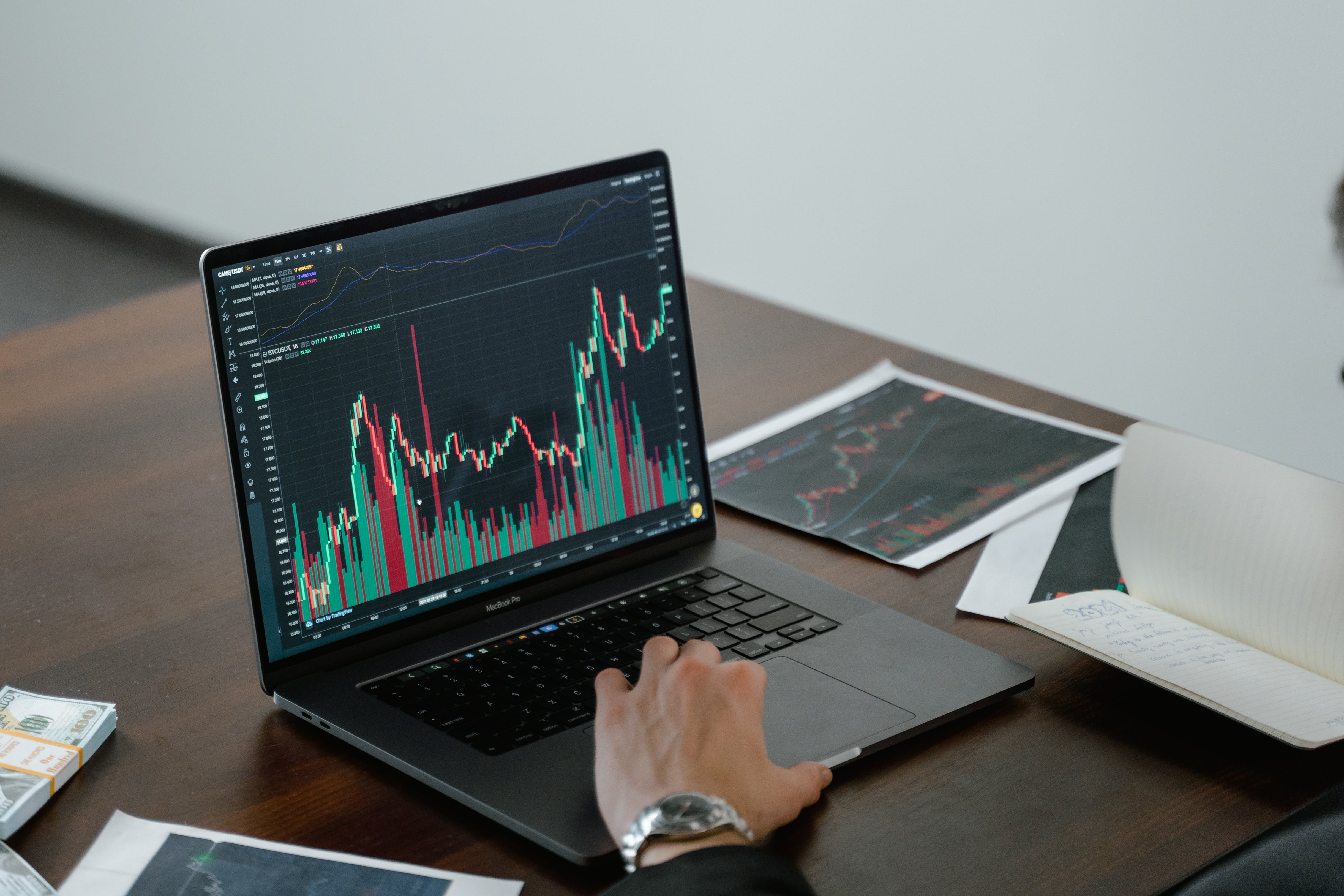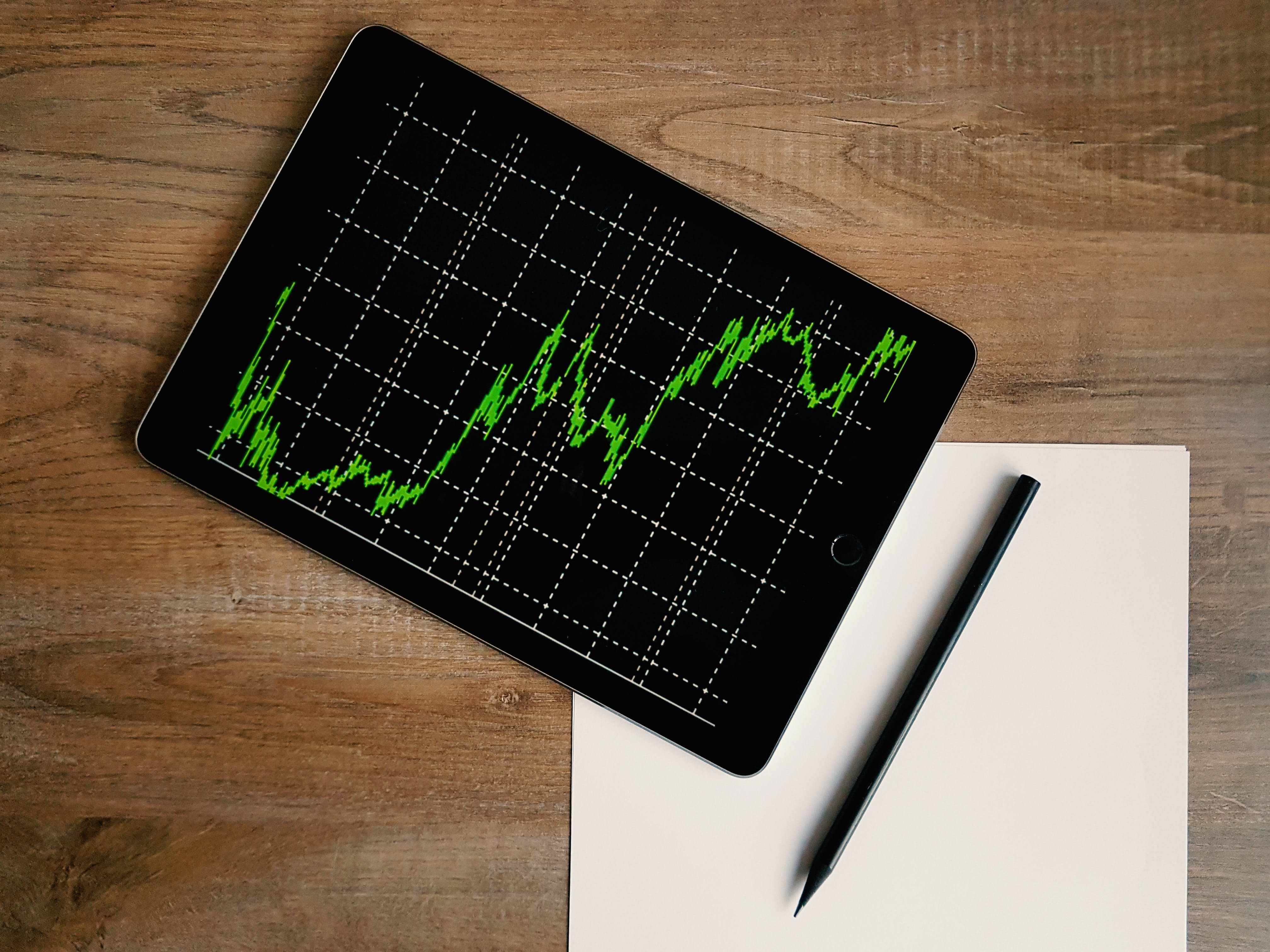AI is revolutionizing the financial markets, transforming the way trading is conducted and reshaping investment strategies. In this article, we’ll delve into the realm of algorithmic trading, machine learning algorithms, big data analysis, and predictive analytics, exploring the benefits, challenges, and real-life examples that showcase the power of AI in trading.
The Rise of Algorithmic Trading
Algorithmic trading, often hailed as the backbone of modern financial markets, is the practice of using computer algorithms to execute trades at speeds and frequencies beyond human capability. This automated approach to trading has witnessed a meteoric rise in recent years, optimizing efficiency and minimizing errors.
Algorithmic trading brings forth a plethora of benefits. The speed and efficiency it offers enable traders to execute orders in fractions of a second, responding to market changes at a pace unattainable by manual trading. This speed advantage is not only about gaining an edge; it’s a necessity in today’s high-frequency trading environment.
Reducing human error is another crucial aspect of algorithmic trading. Emotions, biases, and fatigue can impact human decision-making, leading to costly mistakes. Algorithms, on the other hand, operate based on pre-defined rules and logic, eliminating the risk of emotional trading.
Market access and liquidity are also significantly enhanced through algorithmic trading. These systems can access multiple markets simultaneously, ensuring optimal execution and liquidity, even in complex trading environments.
However, it’s essential to acknowledge the challenges and risks associated with algorithmic trading. The reliance on historical data assumes that future market conditions will mirror the past, which may not always be the case. Sudden market shifts or unexpected events can lead to significant losses, highlighting the need for robust risk management strategies.
Machine Learning Algorithms in Trading
Now, let’s dive into the realm of machine learning algorithms, a subset of AI that has gained immense popularity in the financial sector. Machine learning involves the use of statistical techniques to enable computers to learn and improve from experience.
In trading, machine learning algorithms play a pivotal role in analyzing vast amounts of data to identify patterns and make predictions. Supervised learning, unsupervised learning, and reinforcement learning are the key categories of machine learning algorithms applied in trading.
Supervised learning involves training the algorithm on a labeled dataset, teaching it to make predictions based on known outcomes. This technique is widely used for regression and classification tasks in financial markets.
Unsupervised learning, on the other hand, deals with unlabeled data, helping the algorithm identify hidden patterns and relationships within the dataset. Clustering and dimensionality reduction are common applications of unsupervised learning in trading.
Reinforcement learning takes a different approach by enabling the algorithm to learn from trial and error. The algorithm makes decisions and receives feedback, adjusting its strategy over time to optimize outcomes.
Applications of machine learning in trading are diverse. Pattern recognition allows algorithms to identify trends and signals in market data, facilitating timely and informed decision-making. Sentiment analysis analyzes market sentiment from news articles, social media, and other sources, providing insights into market mood.
Predictive modeling is another powerful application, where machine learning algorithms forecast future market movements based on historical data. These predictive analytics tools assist traders in anticipating market trends and making data-driven investment decisions.
Big Data Analysis in Financial Markets
Big data analysis is a cornerstone of AI in trading, dealing with the processing and analysis of vast datasets to extract valuable insights. The financial industry generates immense volumes of data, including market prices, trading volumes, and economic indicators.
The importance of big data in trading lies in its ability to uncover hidden patterns, correlations, and trends that may not be apparent through traditional analysis. In the fast-paced world of finance, real-time data processing is crucial for making split-second decisions that can impact trading outcomes.
Despite the opportunities big data presents, there are challenges that must be addressed. The sheer volume of data requires advanced analytics tools and technologies. The quality and accuracy of data are paramount, as erroneous data can lead to faulty analyses and flawed decision-making.
Real-time data processing is not without its hurdles. Latency issues can arise, impacting the speed at which data is processed and transmitted. Overcoming these challenges necessitates robust infrastructure and advanced technologies capable of handling the demands of real-time data analysis.
Real-world examples showcase the successful implementation of big data analysis in trading. Hedge funds and financial institutions leverage big data to gain insights into market trends, identify trading opportunities, and manage risks more effectively. The integration of big data analytics with algorithmic trading strategies has proven to be a winning combination in today’s dynamic markets.
Predictive Analytics in Investment Strategies
Moving forward, let’s explore the realm of predictive analytics, a field that involves using data, statistical algorithms, and machine learning techniques to identify the likelihood of future outcomes. In the context of investment strategies, predictive analytics holds the promise of improving decision-making and optimizing portfolio performance.
Predictive analytics in investment strategies revolves around forecasting future market movements, asset prices, and economic trends. By analyzing historical data and identifying patterns, predictive analytics tools provide investors with valuable insights into potential market changes.
One notable application of predictive analytics is the identification of market trends before they become widely recognized. This foresight allows investors to position themselves strategically, capitalizing on emerging opportunities and minimizing risks.
Examples of predictive analytics tools in finance include price forecasting models, volatility prediction algorithms, and portfolio optimization tools. These tools empower investors to make informed decisions based on data-driven projections, enhancing the probability of positive outcomes.
Integrating predictive analytics with algorithmic trading amplifies the effectiveness of both approaches. Algorithms can execute trades based on predictive signals, automating the decision-making process and ensuring timely execution in response to forecasted market movements.
Success Stories and Case Studies
Let’s shift our focus to real-world success stories and case studies that exemplify the impact of AI on trading. Several companies and funds have embraced AI technologies, achieving remarkable results and demonstrating the potential for substantial returns on investment.
One such success story is that of Renaissance Technologies, a hedge fund founded by mathematician James Simons. Renowned for its use of quantitative strategies and advanced algorithms, Renaissance Technologies has consistently outperformed traditional investment approaches. The fund’s flagship Medallion Fund, which relies heavily on AI and machine learning, has delivered exceptional returns, showcasing the prowess of algorithmic trading in financial markets.
Another noteworthy example is the success of AI-powered robo-advisors. These automated investment platforms utilize AI algorithms to analyze market trends, assess risk profiles, and construct diversified portfolios for investors. Robo-advisors have gained popularity for their accessibility and cost-effectiveness, democratizing access to sophisticated investment strategies.
However, not all ventures into AI-based trading have been smooth sailing. The 2012 incident involving Knight Capital Group serves as a cautionary tale. A software glitch in Knight Capital’s algorithm led to a series of erroneous trades, resulting in a loss of approximately $440 million in less than an hour. This incident underscores the importance of rigorous testing and risk management in the development and deployment of algorithmic trading strategies.
Ethical Considerations and Regulatory Challenges
As AI continues to permeate the financial markets, ethical considerations and regulatory challenges come to the forefront. The use of AI in trading raises ethical questions related to transparency, accountability, and the potential for market manipulation.
One ethical concern is the opacity of some AI algorithms. Complex machine learning models may operate as “black boxes,” making it challenging to understand the decision-making process. This lack of transparency raises questions about accountability and the ability to trace the origins of trading decisions.
Market manipulation is another ethical consideration. While AI algorithms aim to analyze data and make objective decisions, there’s a risk that malicious actors could exploit vulnerabilities in these systems for manipulative purposes. Regulatory bodies are increasingly scrutinizing AI-based trading practices to ensure fair and transparent markets.
Regulatory challenges in the financial industry are multifaceted. The rapid evolution of AI technology has outpaced the development of comprehensive regulatory frameworks. As a result, regulators face the challenge of keeping pace with technological advancements while safeguarding the integrity and stability of financial markets.
Balancing the promotion of innovation with the need for regulatory oversight is a delicate task. Striking the right balance requires collaboration between industry stakeholders, regulators, and technology developers to establish standards and guidelines that foster responsible AI use in trading.
Future Trends in AI-Based Trading

Looking ahead, the future of AI-based trading holds exciting possibilities and potential disruptions. Emerging technologies are poised to further transform the landscape of financial markets, offering new avenues for innovation and efficiency.
One such emerging technology is AI for content recommendation. As AI algorithms become more adept at understanding user preferences and behavior, they can play a crucial role in tailoring content recommendations for investors and traders. This personalization enhances the user experience, providing relevant and timely information that aligns with individual investment goals and strategies.
The benefits and challenges of AI will continue to shape the trajectory of AI-based trading. While the advantages of speed, efficiency, and data-driven decision-making are evident, the challenges of ethical considerations, regulatory compliance, and potential system vulnerabilities must be addressed proactively.
Opportunities for investors and traders in the realm of AI-based trading are expanding. As technology evolves, new tools and platforms will empower market participants to navigate the complexities of financial markets more effectively. The democratization of AI technologies, coupled with educational initiatives, will likely contribute to a broader adoption of AI-based trading strategies.
Conclusion
In conclusion, the integration of AI into trading practices has ushered in a new era of efficiency, innovation, and opportunity in the financial markets. Algorithmic trading, machine learning algorithms, big data analysis, and predictive analytics are reshaping investment strategies and influencing decision-making processes.
Real-life examples, success stories, and cautionary tales illustrate the dynamic nature of AI in trading. From Renaissance Technologies’ quantitative prowess to the challenges faced by Knight Capital Group, these stories highlight the importance of robust risk management and ethical considerations in the development and deployment of AI-based trading strategies.
As we navigate the evolving landscape of AI-based trading, it is crucial to address ethical concerns and regulatory challenges to ensure the responsible and transparent use of these technologies. The future holds promising trends, with AI for content recommendation and other emerging technologies shaping the next phase of innovation in financial markets.
In embracing the analytical power of AI, investors and traders have the opportunity to gain a competitive edge, optimize decision-making, and navigate the complexities of modern financial markets with greater precision. The journey into the future of AI-based trading is both exhilarating and challenging, promising a landscape where technology and human insight converge for enhanced financial outcomes.


1 thought on “Can AI Be Used for Trading? How Artificial Intelligence is Changing the Financial Markets and Investing Strategies”